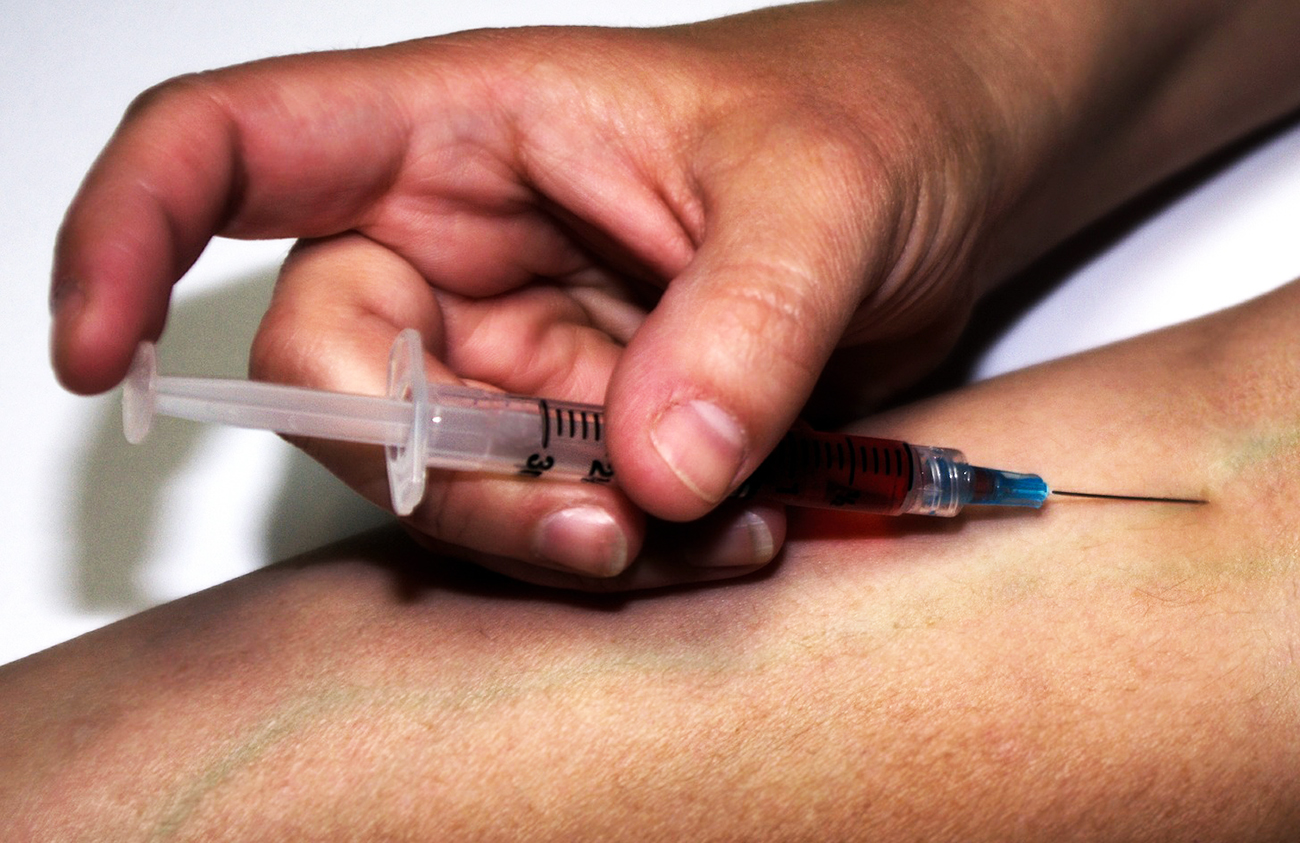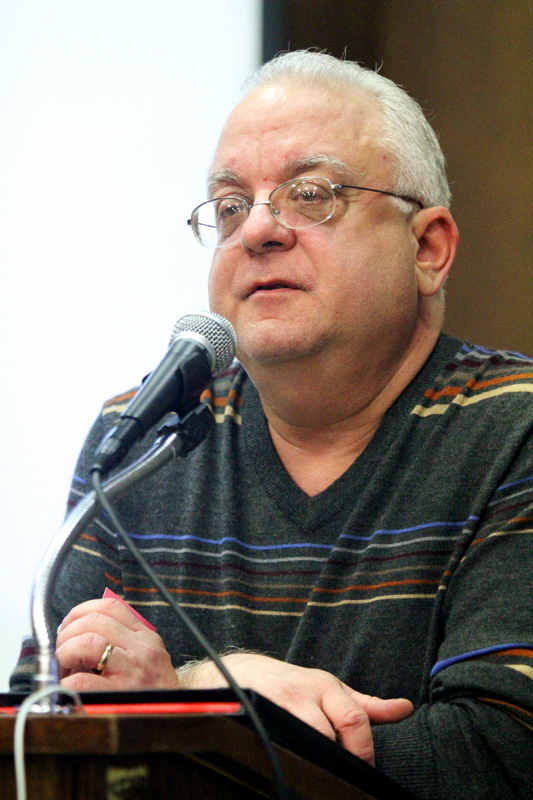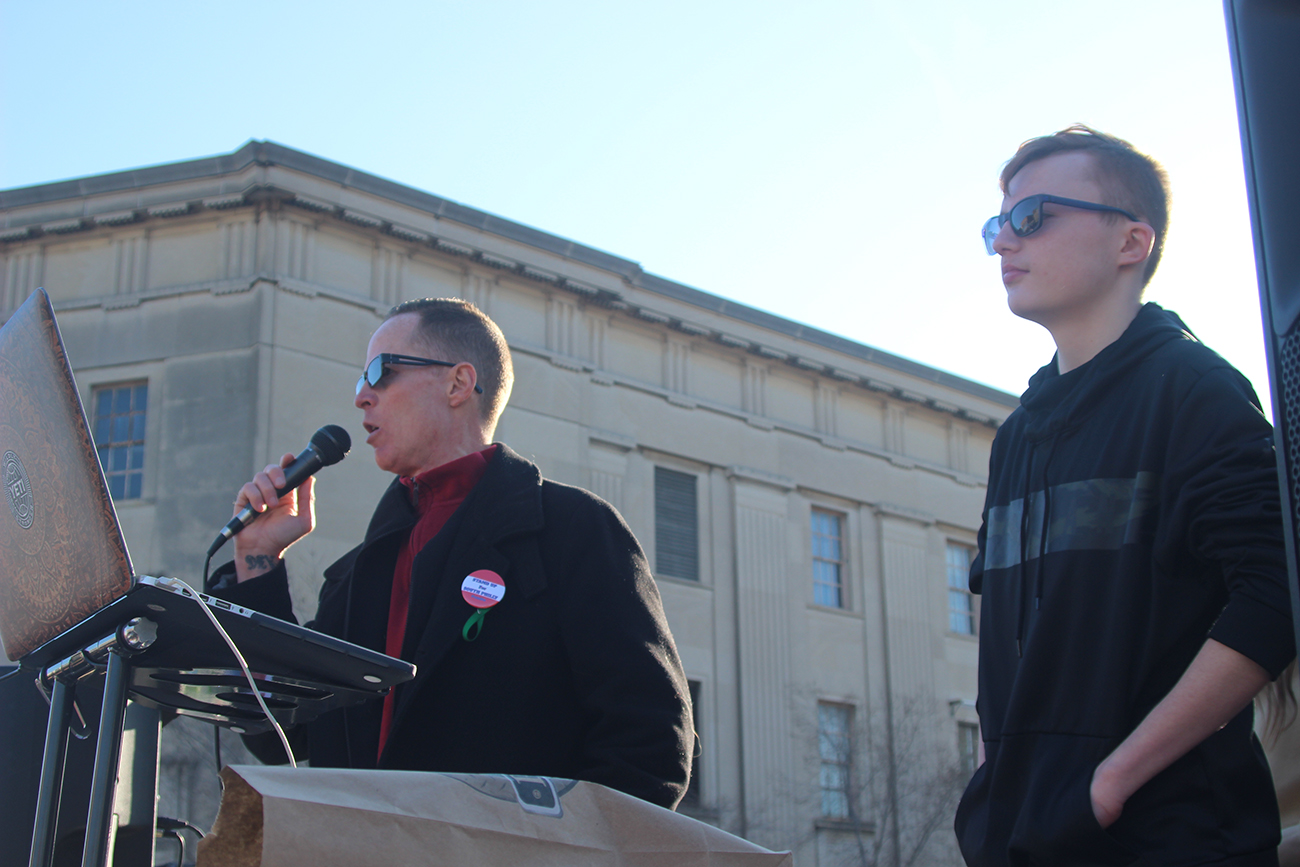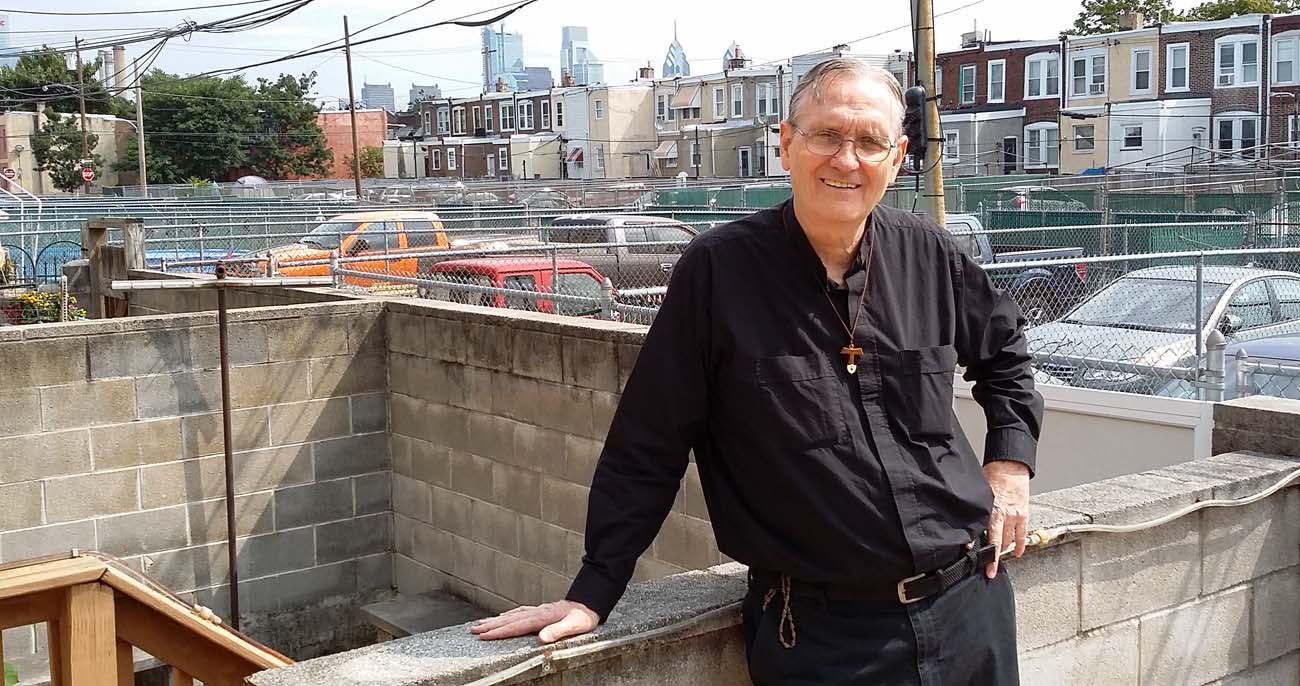
(Liz Masoner/Pixabay)
A new legal decision against a proposed safe injection site in Philadelphia is being welcomed by several area faithful.
On Tuesday, the Third Circuit Court of Appeals ruled the nonprofit Safehouse would violate the federal “crack house” statute (part of the 1986 Anti-Drug Abuse Act) by opening a facility for supervised intravenous consumption of illegal drugs.
“It is a correct statement by the court,” said bioethicist Steven Bozza, director of the archdiocesan Office for Life and Family.
“Thank God for this victory,” said Father Douglas McKay, founder and chaplain of Our House Ministries, a Catholic-based recovery outreach in the Grays Ferry section of the city. “We shouldn’t be going in the direction of safe injection sites. It’s a form of euthanasia.”
Not above the law
In the majority opinion, Circuit Judge Stephanos Bibas wrote that Safehouse’s “admirable” motives to counter overdose deaths did not justify measures that defied the existing law, which bans maintaining drug-involved premises, even temporary ones.
(Archbishop Charles Chaput: Safe injection sites a “dose of despair”)
Back in 2019, Safehouse received a green light for the project from U.S. District Judge Gerald McHugh, who held the law was not applicable, given the nonprofit’s goal to reduce drug use by providing a space for clients to self-inject while receiving overdose interventions, clean syringes and referrals to treatment resources.
[hotblock]
Safehouse’s surprise efforts to open a site last year in South Philadelphia alarmed nearby residents, hundreds of whom rallied in opposition with the support of City Councilmembers Kenyatta Johnson and David Oh, and State Rep. Martina White. The intended location, whose managers ultimately cancelled the lease agreement with the nonprofit, was in the same complex as a day care center and a special education school for young children, as well as offices that served the elderly and those with disabilities.
Citing community concerns, COVID-19 and social unrest, Judge McHugh stayed his earlier ruling in June pending consideration of the case by the Third Circuit. That court then reversed the previous decision, finding while Safehouse itself does not encourage drug use, the nonprofit’s “purpose is that the visitors use drugs,” thereby breaching the statute.
(Safe injection sites don’t treat, only deflect money, former drug user says)
The majority also upheld Congress’s “rational basis to believe that making properties available for drug use will have substantial economic effects.” Opening the site would lower the risk of drug use, which “could increase consumption” and thereby “create more market demand,” the court said, remanding the case to the District Court.
What the science shows
Bozza affirmed the court’s observation that it could not rewrite the statute to accommodate Safehouse’s approach to substance abuse.
“Theologically and ethically, that’s relativism at its core,” he said. “(Safehouse) may be trying to do something good for those in addiction, but you can’t just manipulate the law based on what you think is the proper course of action.”

Bioethicist Steven Bozza, director of the Office for Life and Family, welcomes guests to the 2016 Pro-Life Summit in Philadelphia. Bozza hailed a Jan. 12, 2021 court decision against the city’s efforts to open a safe injection site, a plan he said lacks clinical effectiveness while violating Catholic healthcare ethics. (Sarah Webb)
Last year, Bozza and addiction medicine specialist Dr. Jeffrey Berger assessed safe injection sites, concluding they violated Catholic healthcare ethics while offering no “reasonable hope of benefit to those suffering from addiction.”
The two referenced data from Insite, the first North American safe injection facility, that found less than seven percent of clients at the Vancouver operation accepted referrals to some type of addiction treatment.
Research shows continued drug consumption, which wreaks havoc on neural circuitry, can damage the very areas of the brain needed by an individual for recovery, including those that regulate information processing and adaptation to change. Based on “imaging and neurocognitive testing,” the Brain Injury Association of America stated that “opioid abuse can result in a brain injury that may have long-lasting implications for sustainable recovery, community participation, and quality of life.”
Each instance of drug ingestion also primes the user for relapse well into sobriety. A combination of biological and behavioral triggers can be stored in the brain’s motivational paths for years after an individual has ceased abusing a substance.
The long-term use of medication such as buprenorphine and methadone to combat opioid withdrawal attests to how difficult it can be to overcome drug dependence, said Bozza and Berger.
Yet for advocates of safe injection sites, “science is only valuable if it’s convenient,” said Bozza.
“There’s science out there that proves them wrong,” he said. “In any other situation, it’s the science that matters, but not when it contradicts their preconceived notions.”
Threats to communities, common sense
Safe injection sites are a threat to both the surrounding community and to common sense, said South Philadelphia community organizer Anthony Giordano, a member of St. Monica Parish and, along with his wife Lisa, founder of the grassroots organization Stand Up South Philly and Take Our Streets Back.
Now counting some 13,000 supporters, the group works to improve the neighborhood’s quality of life, which safe injection sites place at risk, said Giordano.
“I just don’t understand how anyone could think this is good for a person in addiction, or for those who live in the area,” he said. “It will make it a hundred times worse for everyone, wherever the site is located.”

Anthony Giordano, founder of a grassroots campaign to improve South Philadelphia, addresses some 2,000 attendees at a March 1, 2020 rally he organized to protest the city’s plans for a safe injection site. His son Carmen Giordano (right) also spoke at the event. (Gina Christian)
Giordano, who networks with community activists both nationally and internationally, pointed to a controversial safe injection site located in the North Richmond section of Melbourne, Australia. A number of residents there are calling to have the operation moved from its current space between a primary school and a public housing complex, while the president of the area business association described the commercial corridor as a “drug dungeon.” Two staff members at the site were arrested in 2019 for alleged drug trafficking.
In Philadelphia, several civic associations joined the Fraternal Order of Police Lodge #5 in filing a July 2019 amicus brief against Safehouse, asserting the gun violence, assaults, thefts and other safety issues surrounding the drug trade are precisely the “horrid consequences” Congress targeted with the crack house statute.
“They are the consequences that Safehouse’s proposal would exacerbate and entrench,” the brief stated. “For (us), the impact of the illegal drug crisis in Philadelphia is not theoretical – it is deeply personal.”
Solutions to a ‘slow death’
Father McKay, who lost a brother to an overdose, agreed, adding he took exception to Judge Jane Richards Roth’s dissenting opinion on the Third Circuit case.
Endorsing Safehouse’s argument, Roth claimed the court was at risk of criminalizing parents who knowingly allow drug-using children to live at their homes, fearing they will overdose on the street – a prospect Father McKay dismisses as untenable, given the cutbacks in treatment resources due to the pandemic.

Father Douglas McKay of Our House Ministries, a Catholic recovery outreach in the city’s Grays Ferry section, described safe injection sites as “a form of euthanasia.” Having lost a brother to a drug overdose, he has spent more than four decades offering pastoral and material support to those in addiction. (Gina Christian)
“I’ve been on the phone with so many mothers, and they don’t know where else to go because the supports are not there,” said Father McKay. “A crisis center will only hold them for a few hours, and they’re forced to bring their kids home.”
Father McKay also challenged the post-decision remarks of Safehouse vice president Ronda Goldfein, who told media she and her colleagues “remain confident that the law was not designed for Americans to stand by silently as their brothers and sisters die.”
“That’s exactly what we’re doing with these sites,” he said.
Neither safe injection sites nor desperate attempts to privately shelter loved ones in addiction reverse the “slow death” of substance abuse, said Father McKay.
“Drugs will take everything you have, and when there’s nothing left to take, they take you,” he said.
Instead, said Father McKay, a combination of supervised abstinence, therapy, recovery group participation and spiritual support have demonstrated success in helping individuals break free of addiction, while alleviating its harmful impact on those around them.
[tower]
Collaboration between law enforcement and social services agencies can improve access to substance abuse treatment. In 2016, Bensalem Director of Public Safety Fred Harran launched a program through which police officers connect those in addiction with recovery services. So far, the effort has assisted some 70 individuals while garnering positive feedback from the community, he said.
“If people get help, they don’t get arrested, and they don’t overdose,” said Harran. “That’s a win-win.”
Thanks to a grant from the Bucks County Drug and Alcohol Commission, the program – Bucks County Police Aiding Recovery, or BPAIR — has been expanded to include 19 police departments. Trained volunteer “navigators” assist the officers, and funding defrays the cost of treatment.
“Getting someone earlier access to treatment is beneficial physically, socially and emotionally – for the families and for the community at large as well,” said Diane Rosati, executive director of the commission.
Ultimately, said Father McKay, those in addiction need “a different kind of infusion” that intravenous drug use, under supervision or on the street, cannot provide.
“Every day you’re sober, the brain is healing more and more, and you’ll develop an awareness of life,” he said. “And you can begin to realize you are not your sins. You are a child of God, and you need his grace and healing. And he is with us always, until the end of time.”
***
If you or a loved one are in an addiction-related medical crisis, call 911.
Resources on addiction recovery can be found on the archdiocesan Catholic Social Services’ Recovery and Hope webpage and the archdiocesan Office for the New Evangelization’s Hope in Christ webpage.
PREVIOUS: PCC pans effort to provide abortifacient drugs via telemedicine
NEXT: Archbishop Perez inspires young adults to learn, get involved in church



Share this story